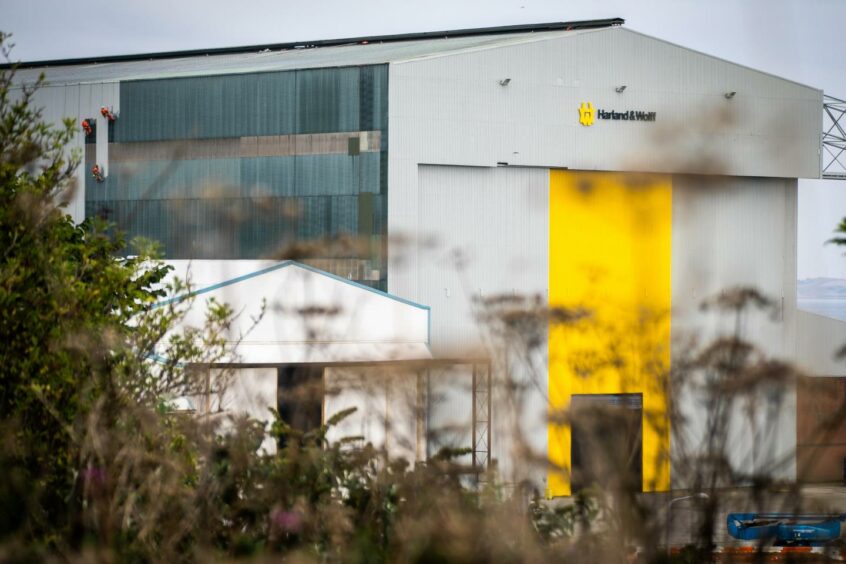
Fabricator Harland & Wolff (H&W) (LON: HARL) has cancelled diversification plans that would see it become a renewables developer, and will focus instead on its core markets of fabrication and maritime work.
The change in strategy was noted in the company’s annual report, issued on 15 August.
Last year the Belfast-headquartered group had signalled its intention to “identify and establish an entry point into the renewable energy industry as a project developer.”
However, its most recent filings note that following the impact of the pandemic and Covid-19, the firm “took a strategic direction to conserve funds and stick to the core business of shipyards and fabrication and not look at further diversification.”
Asked what impact this would have on the company’s operations, a spokesperson said it would retain its developer status for existing projects – such as the long-running Islandmagee gas storage project – but would cease to back further energy projects and instead “keep developing Harland & Wolff as a fabricator for energy project developers.”
“We do not envisage ourselves to be energy project developers, rather, a business that enables project developers to fabricate a number of different structures and component parts in order for them to install and monetise their respective projects,” they added.
Other routes to market remain open. H&W last year signed a memorandum of understanding (MoU) with Navantia and Windar Renovables which would see the trio “actively secure wind farm development projects and execute them together” – which the firm said would be unaffected by the strategy shift.
The venture would primarily target fixed and floating offshore wind projects within the UK, Navantia said at the time, drawing on its two-year relationship with the fabricator working on defence projects.
£500m target
London-listed Harland & Wolff reported revenues of £18.5m for the 17 months ended 31 December 2021, a lengthier reporting period as a result of both Covid-19 and a change in filing timelines to align better with its clients.
While the period still saw the company report a pre-tax loss of £25.5m, it marks a significant change in fortunes from the zero revenues recorded in December 2019.
Moreover, the group is now poised to generate between £65-75m for full year 2022, and has increased its contract backlog to around £110m.
Its goal is now to become a £500m turnover firm within the next five years, chief executive John Wood said in his statement accompanying the annual report.
In addition to bidding for oil and gas work, the firm pointed to the incoming wave of renewables projects as a key opportunity in the coming years, and new ScotWind capacity in particular.
Work on a £26m award by Saipem for the Neart na Gaoithe (NnG) offshore wind farm in the Firth of Forth got underway last year.
It hopes that projects such as these will offer a wealth of potential work for its Methil and Arnish yards, acquired by the company last year in a deal worth £850,000 following the collapse of previous owner Burntisland Fabrication (BiFab).
Meanwhile, Arnish secured a contract to build four suction piles for a subsea template bound for an energy project in the Black Sea.
In Northern Ireland, the company is still optimistic as to the future of Islandmagee.
Expected to be capable of storing approximately 500 million cubic metres of gas – more than 25% of the UK’s current capacity – H&W secured a marine licence for the scheme at the end of 2021.
However, a judicial review into the project following pushback from environmental campaigners has so far pushed back a final investment decision (FID).
In its annual report, H&W nevertheless says it has received “favourable” legal advice on the scheme and expects a “positive outcome” during Q4 of this year.
HARL shares are trading at 11.48 pence.
Recommended for you
